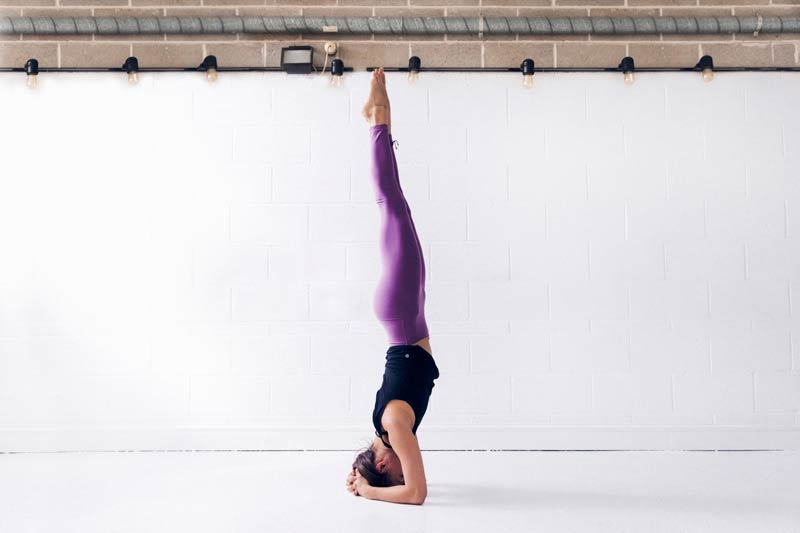
Benefits
- Strengthens arms, shoulders, legs, core, and spinal muscles
- Relieves lower back tension and lengthens spinal muscles
- Calms the nervous system
- Improves focus
- Stimulates the pituitary and pineal glands
- Improves digestion
- Can be therapeutic for menopause and infertility
Contraindications
- Approach this pose with caution and check with a medical professional or yoga instructor before practicing
- Neck or disc injury
- Spine or back injury
- Low or high blood pressure
- Shoulder injury
- Heart condition or stroke
- Headache
- Pregnancy (check with your doctor)
- Menstruation (check with your doctor)
Modifications
- You can practice Headstand against a wall for support until you find your balance
- You can place a folded blanket or yoga mat underneath your forearms and head for more cushion
Chakras
Handstand stimulates the Crown Chakra (Sahasrara), which governs our brain, nervous system, and spirit. Practicing Headstand can help the practitioner connect to cosmic energy, divinity, spirit and source.